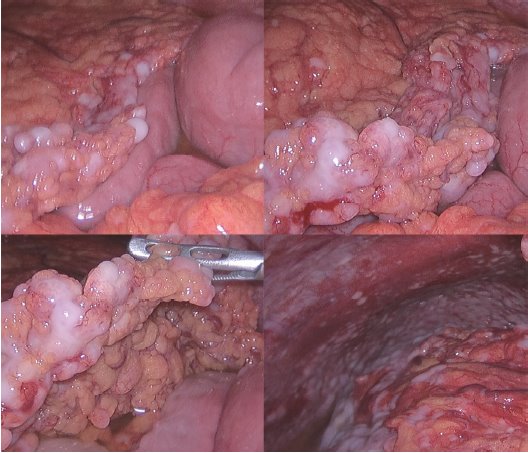Kosin Med J.
2019 Dec;34(2):146-151. 10.7180/kmj.2019.34.2.146.
A Case of Peritoneal Sarcomatoid Mesothelioma with Absence of Occupationl Exposure to Asbestos
- Affiliations
-
- 1Division of Gastroenterology, Department of Internal Medicine, Severance Hospital, Yonsei University College of Medicine, Seoul, Korea. shyoo@yuhs.ac
- 2Division of Gastroenterology, Department of Internal Medicine, Wonju Severance Christian Hospital, Yonsei University Wonju College of Medicine, Wonju, Korea.
- 3Department of Surgery, Yeonsei Hangmac Hospital, Goyang, Korea.
- 4Department of Radiology, Kangbuk Samsung Hospital, Sungkyunkwan University School of Medicine, Seoul, Korea.
- 5Department of Pathology, International St. Mary's Hospital, Catholic Kwandong University College of Medicine, Incheon, Korea.
- KMID: 2467975
- DOI: http://doi.org/10.7180/kmj.2019.34.2.146
Abstract
- Sarcomatoid mesothelioma is not very common, mesothelioma is directly attributable to occupational asbestos exposure, with 90% of cases showing a history of exposure. A 66-year-old male was admitted with an abdominal pain that persisted for 3 weeks. He had no abdominal mass. Computed tomography showed soft tissue thickening in perihepatic space and nodularities in omentum and peritoneum with ascites. There was no absolute diagnosis evidence in ascites analysis. Although the pathology of ascites was free for malignancy, the patient underwent omentum biopsy for definitive diagnosis. In laproscopic exploration, there was omental cake, peritoneal nodular seeding. It was suspected cancer carcinomatosis. Immunohistochemical findings suggested that it was sarcomatoid masothelioma. This is the rare case of a peritoneal sarcomatoid mesothelioma, without any exposure to asbestos.
Keyword
MeSH Terms
Figure
Reference
-
1. Klebe S, Brownlee NA, Mahar A, Burchette JL, Sporn TA, Vollmer RT, et al. Sarcomatoid mesothelioma. Mod Pathol. 2010; 23:470–479.2. LoggieBW TA. Malignant Peritoneal Mesothelioma. Curr Treat Options Oncol. 2001; 2:395–399.
Article3. Damhuis RA, Schroten C, Burgers JA. Population-based survival for malignant mesothelioma after introduction of novel chemotherapy. Eur Respir J. 2012; 40:185–189.
Article4. Carbone M, Bedrossian CW. The pathogenesis of mesothelioma. Seminars in Diagnostic Pathology. 2006; 23:56–60.
Article5. Bianchi C, Giarelli L, Grandi G, Brollo A, Ramani L, Zuch C. Latency periods in asbestos-related mesothelioma of the pleura. Eur J Cancer Prev. 1997; 6:162–166.6. Yamate J, Tomita A, Kuwamura M, Mitsunaga F, Nakamura S. Spontaneous peritoneal malignant mesothelioma in a geriatric japanese macaque. Exp Anim J. 2007; 56:155–159.
Article7. Marchevsky AM, Wick MR. Current controversies regarding the role of asbestos exposure in the causation of malignant mesothelioma. Ann Diagn Pathol. 2003; 7:321–332.
Article8. Yates DH, Corrin B, Stidolph PN, Browne K. Malignant mesothelioma in south east England. Thorax. 1997; 52:507–512.9. Elmes PC, Simpson JC. The clinical aspects of mesothelioma. Q J Med. 1976; 45:427–449.10. Wang ZJ, Reddy GP, Gotway MB, Higgins CB, Jablons DM, Ramaswamy M, et al. Malignant pleural mesothelioma:evaluation with CT, MR imaging, and PET. Radiographics. 2004; 24:105–119.
Article11. Marchevsky AM. Application of immunohistochemistry to the diagnosis of malignant mesothelioma. Arch Pathol Lab Med. 2008; 132:397–401.
Article12. Davis SR, Tan L, Ball DL. Radiotherapy in the treatment of malignant mesothelioma of the pleura, with special reference to its use in palliation. Australasian Radiol. 1994; 38:212–214.
Article13. Berghmans T, Paesmans M, Lalami Y, Louviaux I, Luce S, Mascaux C, et al. Activity of chemotherapy and immunotherapy on malignant mesothelioma. Lung Cancer. 2002; 38:111–121.
Article14. van Meerbeeck JP, Gaafar R, Manegold C, van Klaveren RJ, van Marck EA, Vincent M, et al. Randomized phase III study of cisplatin with or without raltitrexed in patients with malignant pleural mesothelioma. J Clin Oncol. 2005; 23:6881–6889.
Article15. Ceresoli GL, Gridelli C, Santoro A. Multidisciplinary treatment of malignant pleural mesothelioma. The Oncologist. 2007; 12:850–863.
Article
- Full Text Links
- Actions
-
Cited
- CITED
-
- Close
- Share
- Similar articles
-
- Malignant peritoneal mesothelioma with nonspecific history: a case report
- Two cases of malignant mesothelioma of the peritoneum and pericardium
- The peritoneal mesothelioma: 4 cases report
- Analysis of Pulmonary Asbestos Body in Malignant Mesothelioma: A case report
- OccIDEAS: An Innovative Tool to Assess Past Asbestos Exposure in the Australian Mesothelioma Registry




